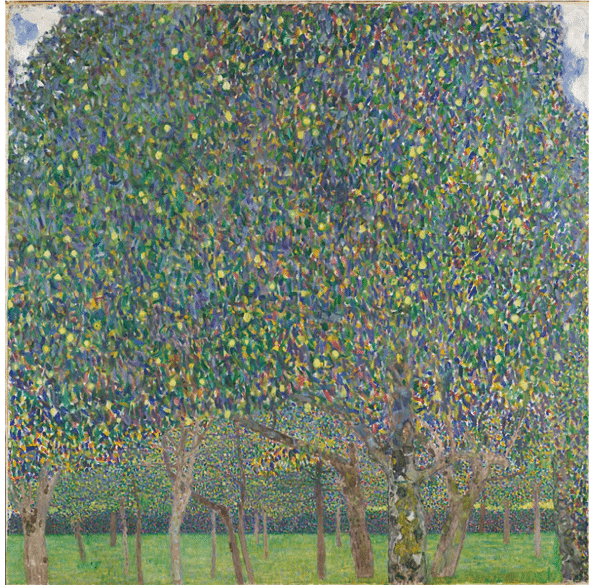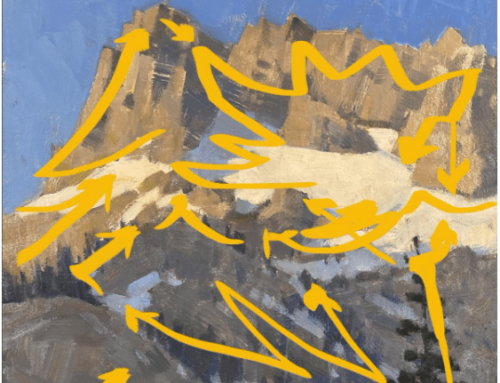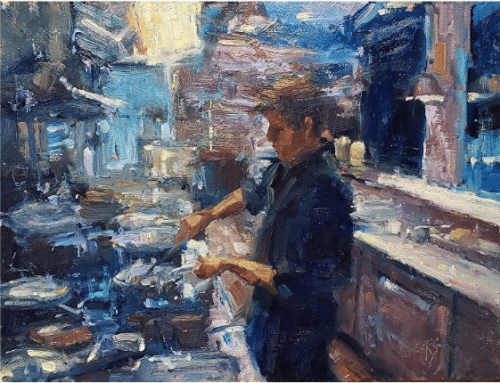Just like the lingering end of winter and the painfully gradual arrival of spring, sometimes your muse can seem like a slacker. It’s great to shake yourself out of the daily daze with a vacation once in a while. So, consider this exercise a sort of Spring Break in Cancun with your muse.
Who’s Muse?
Your muse – the creative impulse that tempts and drives and inspires you to want to make your art, is different from technique. The muse doesn’t tell you how; it doesn’t dictate what you create, and it certainly doesn’t get credit for the work you make. It’s the personification of a partnership with your passions and your imagination.
Your muse is the force underlying your will to create at all. You either choose to work with it or you don’t. If you’re a matter-of-fact, down-to-detail rational realist who’s never had much use for a muse, that’s fine. For you, this exercise can be even more interesting.
Of course, technique is crucial. You should be well-versed in the “rules,” the traditional, tried-and-true principles and techniques that have worked for artists throughout history. But equally important is “forgetting them,” as they tell you do, and sometimes that requires an intervention.
“You have to know the rules before you can break them,” they say. So: List all the rules you know about painting*. Then next to each rule, write down two ways to break it.
Why? Familiarity breeds fatigue. And playing it safe halts development. Remember what Oscar Wilde said: Dullness is the coming of age of seriousness. Don’t let seriousness happen to you!
Art is supposed to fun; it’s all about play. Remember how exciting it was to break the rules when you were a kid?
Here’s the exercise broken into three parts: When you have your list of rules and two specific strategies or techniques for how to break each one, do the following:
- think of two “alternative possibilities” – ways to break them artfully – and write them down
- pick one anti-rule and invent a way to make it work. This is the most important step.
The goal is not to be destructive and create chaos, it’s to discover exceptions. This isn’t about ditching design or technique or proving rules are bad. The point is to discover when and how to break a given role by inventing workarounds that open up new ways of thinking and doing.
If you generally obey the “rule of thirds,” invent two different ways to make a new “rule of dead center” or “rule of two halves” work out (circular compositions are one way to do this, another might be a depiction off a central path receding into the horizon with strongly asymmetrical points of interest on either side of it).
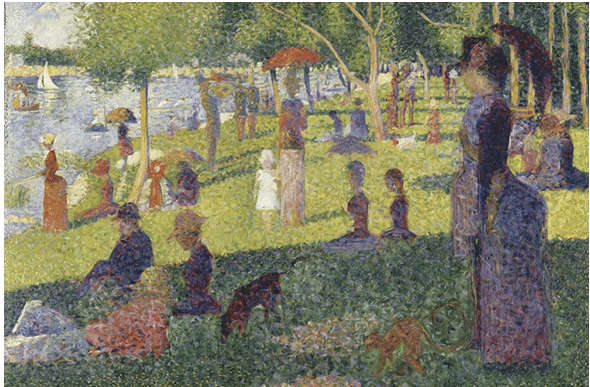
Seurat’s Sunday Afternoon the La Grande Jette. The figure in the center with the bright umbrella is …. well, right in the center. Also, I’d be hard-pressed to nominate a single focal point here – I think there are many competing “centers of interest”.
If you usually include a strong center of interest or definite focal point, think of two different ways to make a successful painting that doesn’t have one (e.g. What about a circular or triangular composition? does a painting of a sunset always need a focal point? Does a lily pond? A flowering tree? A crowded park in spring?).
Once you start looking, you find out that almost NONE of the most famous paintings in the world follow the conventional rules of composition and design. A very good reason for this is that artists learn the principles of composition and technique so thoroughly that they incorporate their goals, their desired results, without reproducing them in their work.
Doing this reintroduces you to your creativity and your art. It’s like renewing your vows; you’re getting to know your muse again (or meet it for the first time). Put aside whatever you know all too well; you will discover things you never would have otherwise, and the experience will help you develop a better understanding of, and versatility with, your medium.
If you take this far enough, you can end up deepening your understanding of your personal goals and voice (vision and style). What would happen if you deliberately denied yourself everything you knew about other peoples’ paintings and had to punch your way out of the paper bag, as it were?
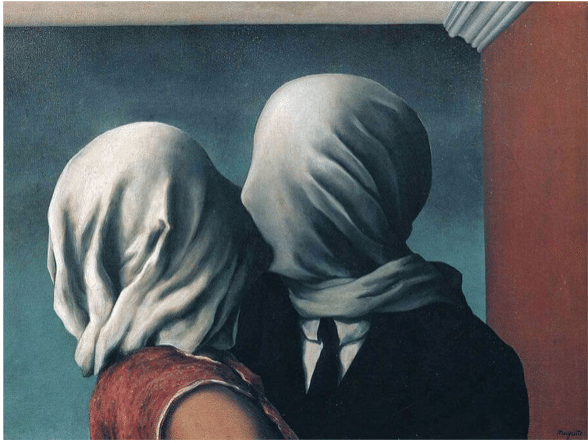
Rene Magritte, The Lovers, 1928. What rule of thirds?
And remember: Friends don’t let friends be serious. Every rule was once a shot in the dark, a wild guess, a response to a problem that an artist in the throes of the creative flow came up with on the fly.
The goal is to acquire enough sound technique to make it easy for you to be yourself in your work and to facilitate creative flow.
Long may you flow.
*The rules that come to mind first are the ones you need to learn to break the most. However, in case you haven’t learned the rules yet, here are some ripe for the breaking (none of which Klimt obeys in his magnificent pear tree painting, btw!): Every painting needs a focal point or center of interest; apply the rule of thirds, dividing your composition roughly according to the golden mean; simplify complex pattern and design into 2-3 big, simple shapes; differentiate between foreground, middle and background. incorporate and key everything to a well-positioned horizon; move the eye around the painting with leading edges and lines; vary all edges, keeping some soft and others hard and sharp; include strong directional lights and consistent, well-defined shadows; create a sense of movement; use perspective – both atmospheric and “scientific” – to create the illusion of depth and receding space; avoid busy paintings without places for the eye to rest; create strong and balanced vertical and horizontal elements; avoid duplicating forms and shapes; vary your brushstrokes; avoid tilting or “leaning” objects (such as tree trunks or branches) away from the painting’s center.
Wshew! Now you know the rules – and these are great “rules of thumb” to keep in your toolbox and to have in the back of your mind, especially while painting plein air landscapes. Just don’t hesitate to throw them out the window … when you feel it’s necessary.
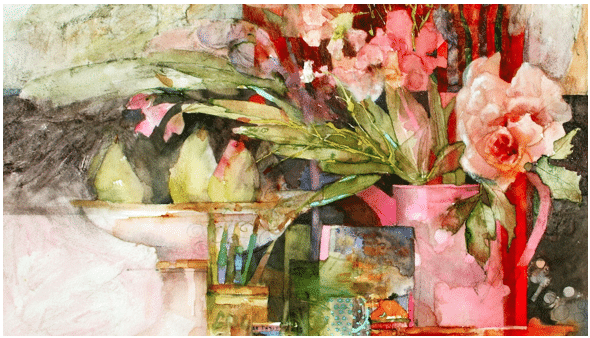
Shirley Trevana, still life, watercolor. Shirley T paints watercolors that break the rules – beautifully.
Feeling frisky enough to break some rules of your own? Check out Shirley Trevena’s inspiring video, Breaking the Rules of Watercolor.

